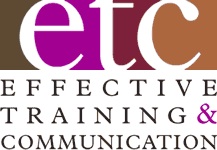(Last month’s lead article simply listed those physical and vocal delivery skills that, properly used, can mask symptoms of Presentation Anxiety while projecting an image of confidence, credibility ad competence. Now, for the next six months, we’ll take a deeper dive with each of those PA-masking skills you can add to your workplace presenter tool kits. So, let’ start with increasing your volume.)
One easy way to become a more engaging audience-centric presenter is to effectively harness your Vocal Power and simply Speak Up! Volume, inflection and rate of speaking combined can significantly impact your audience’s attention, interest in your message … and positive impression of you, the messenger. Speaking up also effectively masks some PA symptoms.
Loud is Good
In our culture, we tend to interpret a soft-spoken voice as coming from a speaker lacking in confidence or credibility. Not good reactions for your audience to have about you. Even on a microphone, the soft-spoken voice delivers that weak impression loud and clear. It doesn’t matter if these reactions are valid – remember the Perception is Reality demon. If you sound weak to the audience – you are.
We are conditioned from birth to be quiet. How many bazillion times did someone tell you to be quiet, keep it down or use your ‘inside voice’. As adults, this conditioning creates an automatic volume control monitor in your head. When you exceed that level, the little red light goes on and tells you to get quieter.
The problem for presenters is that monitor is preset for one-on-one volume level. Even in a small meeting room, you are much farther away from the closest listener than in normal conversation. So, overcome your programming, ignore the little read light and speak up.
Audience Benefits
When you do increase your volume, your audience really benefits:
- You’re easier to hear, especially over room noise, side conversations, outside distractions and the hum of the projector. The easier it is to hear you, the easier it is to listen to what you say.
- As your volume increases, so does your inflection or change in pitch. You don’t have any inflection when you whisper. When you speak up, you naturally add more vocal color and emphasis to your message delivery. That emphasis makes it easier for the audience to understand important points. And you’ll avoid speaking in a monotone – a major audience turn-off.
- As you speak up, you also slow down. You can’t talk fast AND loud. As you expend more energy on volume, you automatically slow down. Your more comfortable pace makes it easier for the audience to process your message and keep up with you.
- Since audiences equate volume and vocal energy with credibility, speaking up is especially important for speakers who are smaller in stature, younger or female. So, harness the power of the ‘Mom Voice’ or ‘Soccer Coach Voice’ so your audience is confident in your message.
- Increasing volume also channels that nervous energy your body is generating more productively. You burn off those extra calories with vocal energy instead of nervous physical mannerisms. By breathing deeper, you also minimize some Presentation Anxiety symptoms because the extra oxygen helps relax you. Your audience sees and hears a more confident and credible speaker – they like that.
Double Down
When I coach my executive clients, we always work on increasing volume. I often tell them to double their volume in practice exercises. This doesn’t mean shouting, just pumping more breath through your vocal cords so you sound louder. It takes some practice, but it’s worth the effort.
So, when you’re practicing your presentations out loud, consciously increase your volume. See for yourself that it will slow you down and increase your natural inflection. Have several people sit in as a practice audience and ask for their reactions when you Speak Up. And see how this simple technique also helps you mask Presentation Anxiety.

